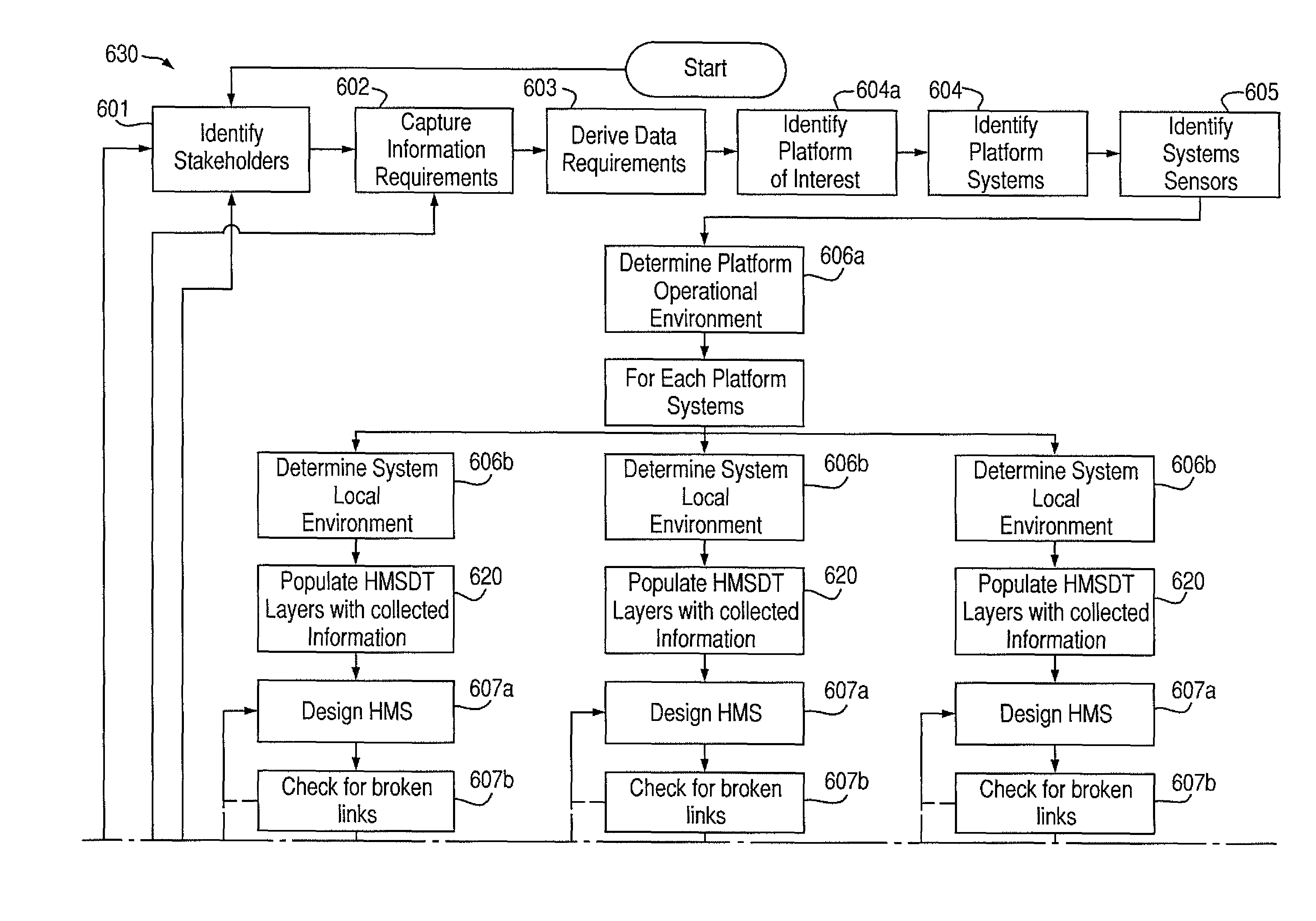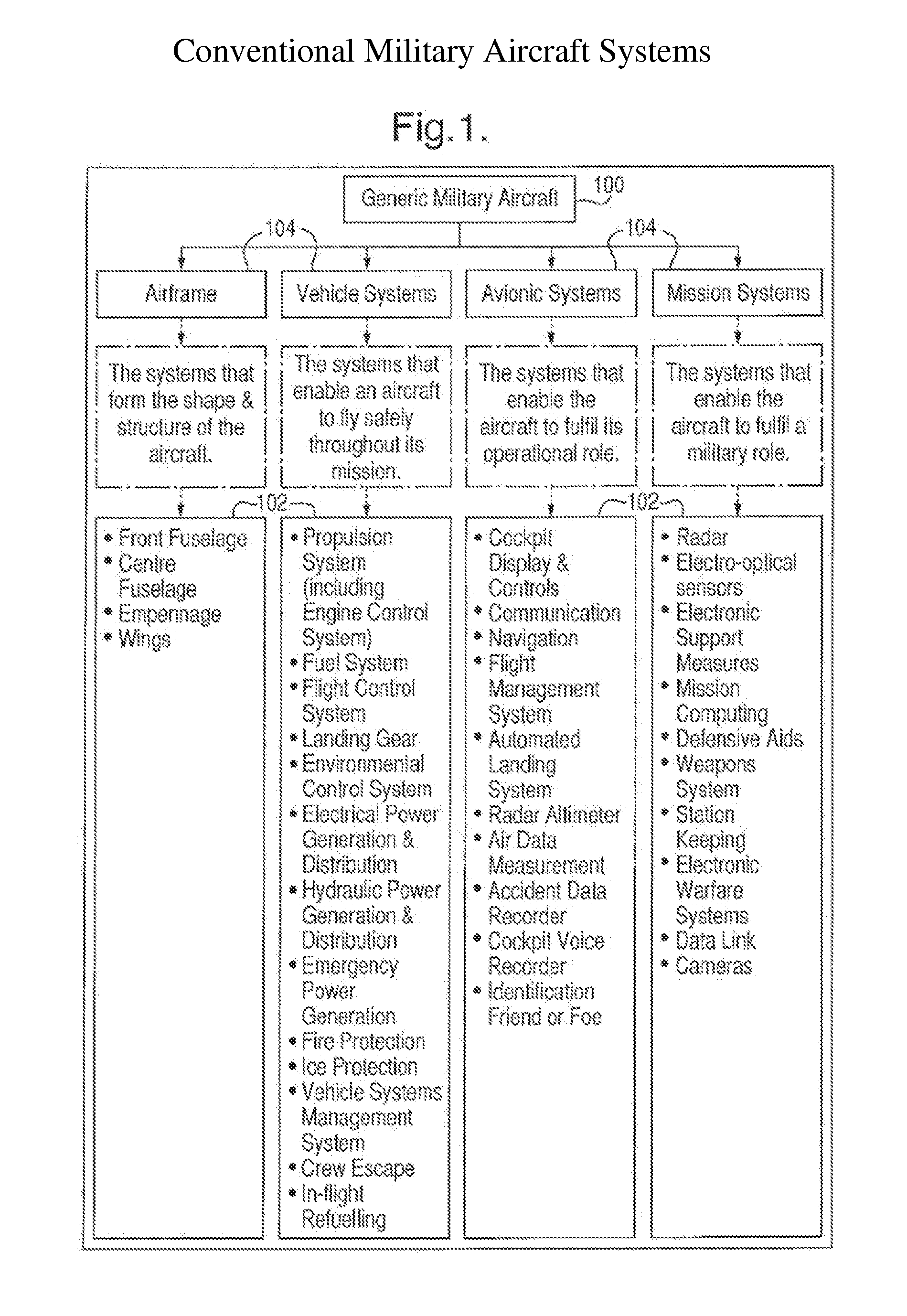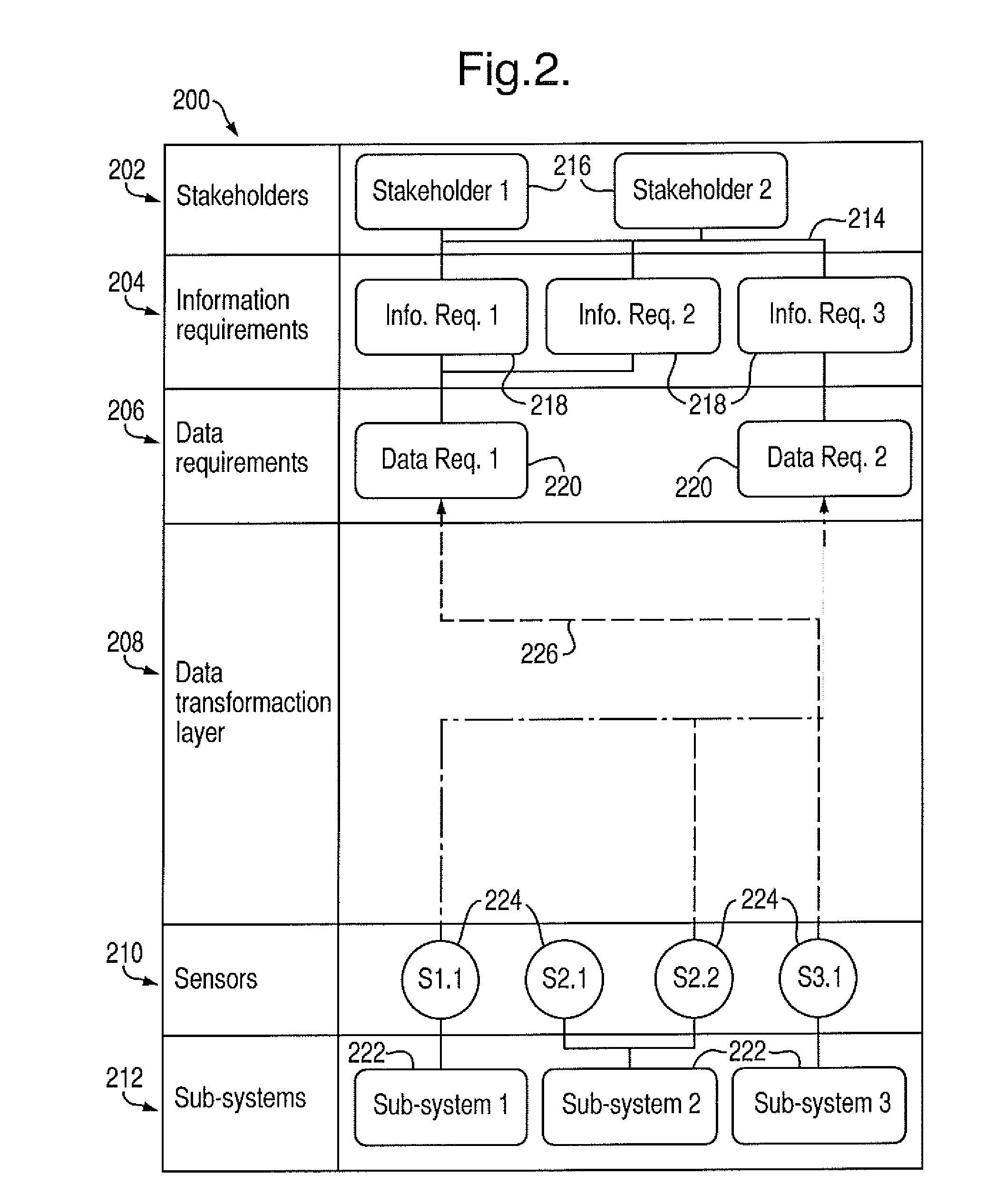Monitoring system
a monitoring system and monitoring technology, applied in the field of monitoring systems, can solve problems such as difficult to elucidate specifications (e.g. informational requirements), insufficiently integrated support capability, and design of health management systems for legacy platforms or particularly complex new platforms
- Summary
- Abstract
- Description
- Claims
- Application Information
AI Technical Summary
Benefits of technology
Problems solved by technology
Method used
Image
Examples
first embodiment
[0100]FIG. 2 shows, schematically, a secondary sub-system of a platform, in the form of a health management system 200. The health management system 200 is configured to monitor the health of a platform comprising a plurality of sub-systems, for example of the type shown generically in FIG. 1.
[0101]In FIG. 2, the health management system 200 is represented as a plurality of layers arranged in a hierarchical manner. Each layer represents an information type or procedure that can be populated when designing the health management system 200. In other words, each layer specifies the essential information required for the design of the health management system 200 in a logical and generic (i.e. not platform-specific) way. Therefore, FIG. 2 can be considered to represent schematically both the structure of the health management system 200 itself, and a graphical user interface of a design tool used to design a health management system 200, as will be explained in more detail below.
[0102]T...
second embodiment
[0143]FIG. 5 shows, schematically, a secondary sub-system for monitoring the condition of a platform, in the form of a health management system 230. As for FIG. 2, FIG. 5 represents the structure of the health management system 230, and again can also be considered as a schematic representation of a graphical user interface of a design tool used to design the health management system 230.
[0144]The health management system 230 of the second embodiment has the same hierarchical structure as the first embodiment shown in FIG. 2, and like reference signs are used in FIG. 5 to denote like features.
[0145]The health management system 230 of FIG. 5 differs from the first embodiment shown in FIG. 2 in that the information requirements layer 204 and the data requirements layer 206 can each contain a hierarchical structure of requirement blocks 218, 220.
[0146]In the FIG. 5 example, the information requirements layer 204 includes an information requirement block 218 denoted Info. Req. 3, which ...
third embodiment
[0156]FIG. 6 shows, schematically, part of a secondary sub-system for monitoring the condition of a platform, in the form of a health management system 240. In this embodiment, as in previous embodiments, the health management system 240 comprises a hierarchical structure of stakeholders, information requirements, data requirements, data transformation, sensors and sub-systems layers (such as shown in FIGS. 2 and 5). Only the stakeholders layer 202 and the information requirements layers 204 are shown in FIG. 6.
[0157]This third embodiment includes an additional information use layer 242, which lies outside the hierarchical structure and parallel to the data requirements layer, so as not to disrupt the top-to-bottom flow of data through the hierarchical layer structure of the health management system 240.
[0158]The use layer 242 comprises a plurality of use blocks 244, each use block 244 being connected to an information requirement block 218 in the information requirements layer 204....
PUM
 Login to View More
Login to View More Abstract
Description
Claims
Application Information
 Login to View More
Login to View More - R&D
- Intellectual Property
- Life Sciences
- Materials
- Tech Scout
- Unparalleled Data Quality
- Higher Quality Content
- 60% Fewer Hallucinations
Browse by: Latest US Patents, China's latest patents, Technical Efficacy Thesaurus, Application Domain, Technology Topic, Popular Technical Reports.
© 2025 PatSnap. All rights reserved.Legal|Privacy policy|Modern Slavery Act Transparency Statement|Sitemap|About US| Contact US: help@patsnap.com



